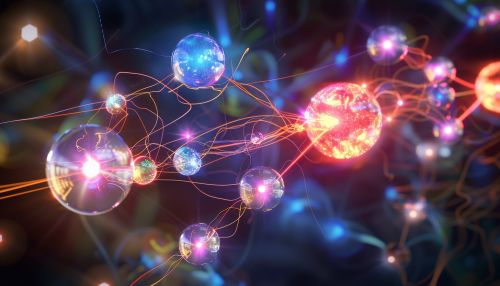Multi-Fusion Systems
Introduction
A Multi-Fusion System is an advanced technology that combines multiple fusion processes to generate power. This technology is a subset of Nuclear Fusion, which is a process where atomic nuclei are combined to form a heavier nucleus. Multi-Fusion Systems aim to optimize the fusion process by utilizing different fusion methods simultaneously, thereby increasing the efficiency and output of the fusion reaction.


Fusion Processes
There are several fusion processes that can be incorporated into a Multi-Fusion System. These include:
- Inertial Confinement Fusion (ICF): This process uses high-energy lasers or ion beams to heat and compress a small pellet of fusion fuel.
- Magnetic Confinement Fusion (MCF): This process uses magnetic fields to confine the fusion fuel in the form of a plasma.
- Electrostatic Confinement Fusion (ECF): This process uses electrostatic fields to confine the fusion fuel.
- Muon-Catalyzed Fusion (MCF): This process uses muons to catalyze the fusion reaction.
Advantages of Multi-Fusion Systems
Multi-Fusion Systems offer several advantages over single-process fusion systems. These include:
- Increased Efficiency: By combining multiple fusion processes, Multi-Fusion Systems can achieve higher efficiencies than single-process systems.
- Greater Output: Multi-Fusion Systems can generate more power than single-process systems due to the simultaneous occurrence of multiple fusion reactions.
- Flexibility: Multi-Fusion Systems can be designed to utilize the most effective fusion processes for a given set of conditions, making them more adaptable to different operating environments.
Challenges and Future Research
Despite their potential advantages, Multi-Fusion Systems also present several challenges. These include the complexity of integrating multiple fusion processes, the need for advanced materials to withstand the extreme conditions of multiple fusion reactions, and the difficulty of controlling and optimizing multiple simultaneous fusion reactions.
Future research in Multi-Fusion Systems is focused on addressing these challenges and further improving the efficiency and output of these systems. This includes the development of advanced materials, the design of more effective confinement methods, and the optimization of fusion reaction control techniques.
